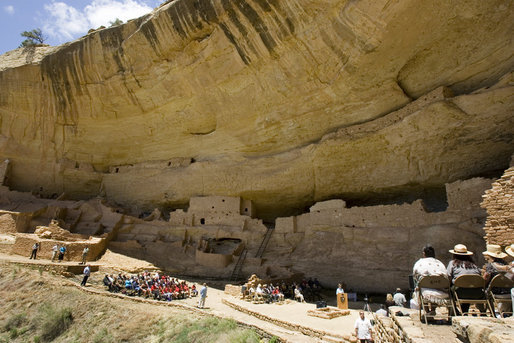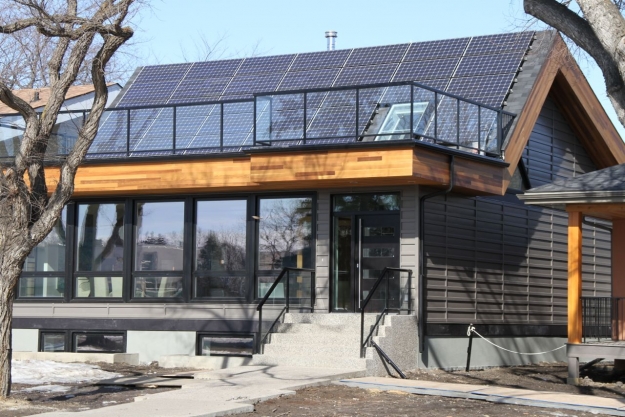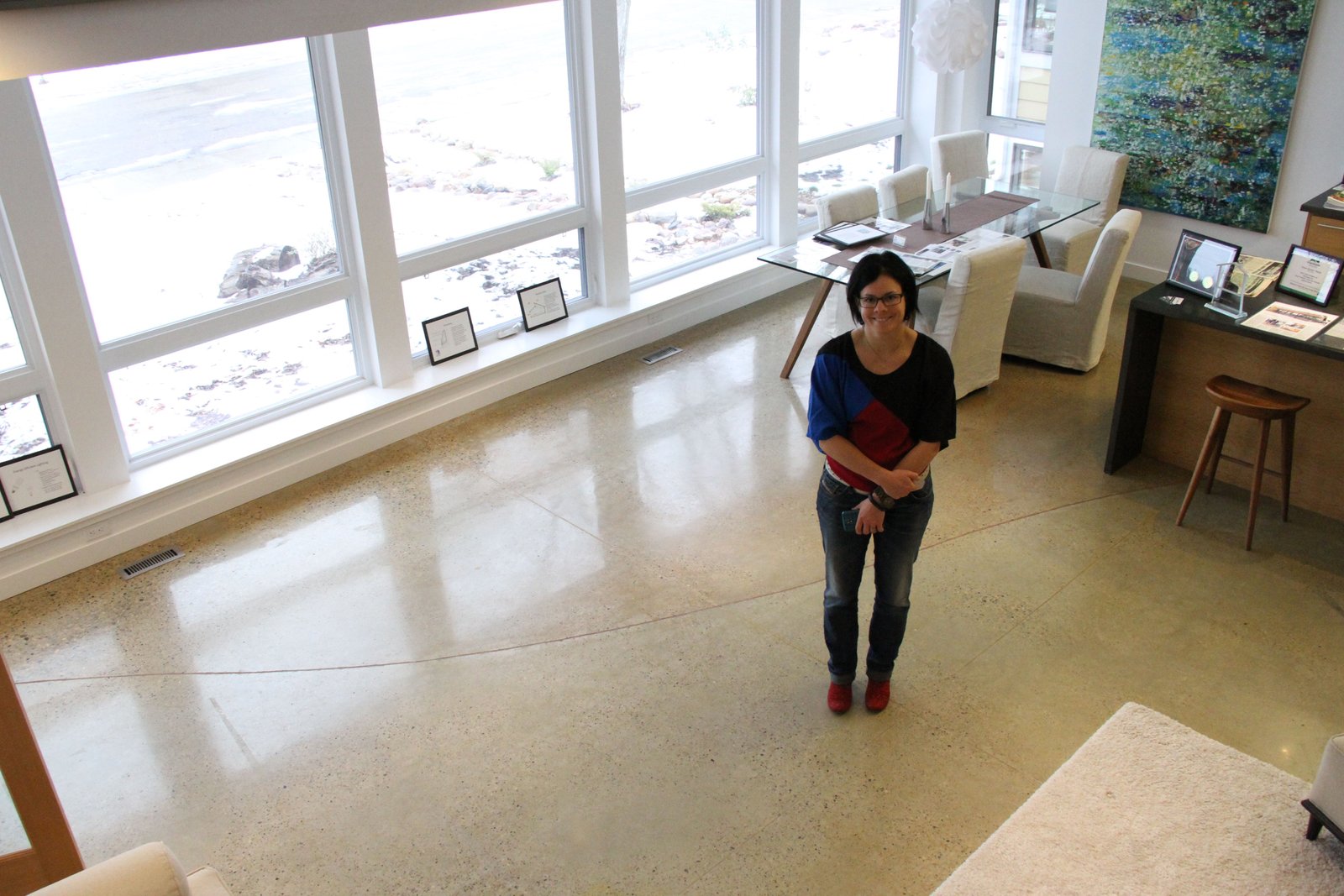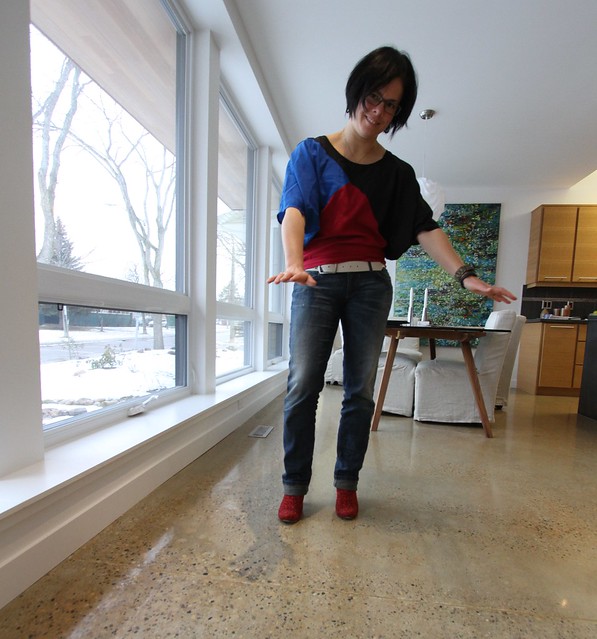By David Dodge and Duncan Kinney
The Ancient Pueblo peoples got free heating and cooling at the Mesa Verde cliff dwellings in what’s now Colorado and they did it without electricity, insulation, natural gas, air conditioning or modern building techniques. This pre-European contact Native American civilization built homes that were comfortable year round heated mostly by passive solar energy and thermally massive building materials.
These Ancient Pueblo homes are shaded from the hot summer sun by the natural overhang conveniently provided by the cliff. During the winter the sun is lower in the sky and hits the homes, heating up the adobe and storing energy in the thermally massive building material. Heat is absorbed during the day and released slowly at night. Through good passive solar design they got solar heating in the winter and shade from the blazing sun in the summer.

The cliff dwellings in Mesa Verde National Park are shaded by the overhang provided by the cliff.
Contrast that with modern homes built in Edmonton, Vancouver or Toronto today. Despite the fact that we live in northern cities where it gets quite cold we do not orient our homes and neighborhoods to face the sun. We build homes that overheat in the summer and are too cold and drafty in the winter. Edmonton is at 53 degrees of latitude and the “warm season” has an average temperature of 18 degrees C yet we build homes with air conditioners.
There is a movement among builders and architects to rediscover passive solar design. You can find examples in the Passivhaus, net-zero and green building movements. They’re finding passive solar design works hand-in-hand with thermal mass to create a very comfortable place to live.
“People who come to this house are always asking if we are on a radiant floor heating system and we tell them that we weren’t. The reflex is because we have a warm concrete floor we assume that there is heat going through it via a mechanical system. In this case we don’t have to, the floor feels warm just because it absorbed the radiation from that day,” says Amelie Caron a high performance building consultant in Edmonton.
Caron is talking about the Belgravia Green net-zero home. Windows cover almost the entire south facing portion of the main floor of this very energy efficient home.

The Belgravia Green net-zero home gets half of its energy from passive solar heating and thermal mass.
“The massive windows here cover a big part of the heat demand of the house just because of the size of them. The overhang that was put over the windows was calculated to shade in the summer, because in the summer we don’t want that heat, and in the winter because the sun is a lot lower we want all that solar gain to come in the house and keep our environment warm,” says Caron.
According to Caron passive solar heating combined with thermal mass from the concrete floors provides 50 per cent of the space heating in this 1,540 square foot home.
“Thermal mass is usually what we see passive solar married with, if I can put it that way because the thermal mass allows us to benefit from that heat once the sun is gone,” says Caron.
The polished concrete floor acts like a giant thermal battery soaking up the heat from the sun by day and releasing it slowly after the sun goes down. Passive solar heating is a really simple concept, but there is some science behind it and there are a few things that need to work together.
If you’re shopping for a home or looking to design a new one you want large, quality south facing windows with a high solar heat gain co-efficient. For your north, east and west facing windows you want a lower solar heat gain co-efficient. The windows at Belgravia Green are triple-paned with low “E” (emissivity) coating.
Belgravia Green has a concrete floor for thermal mass but you can use tiles or an earthen floor to provide the same effect.
We can and should design neighbourhoods with better solar orientation and we should work with builders to collectively take advantage of this free source of energy.
As anyone with a west facing home will attest, getting it wrong can mean a home that is a sweaty hot box in the summer. There is however a low-tech solution to this problem. The right sized deciduous tree can shade your west facing windows in the summer and let the sun shine in in the winter.
If you have a south or west-facing window then you’re taking advantage of passive solar gain whether you know about it or not. It’s the design of the house that determines whether your house is a pleasant place to be with lower energy bills or a sweatbox.


